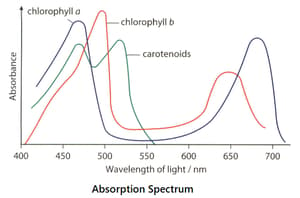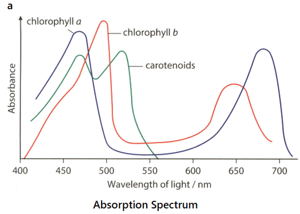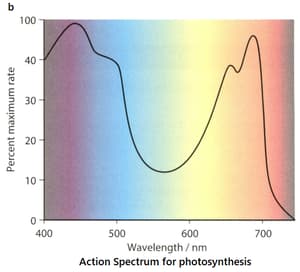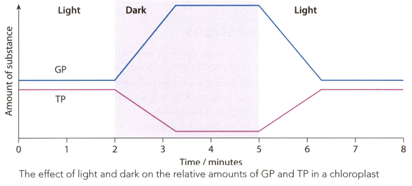Based on the given figure, what is the colour of carotenoids? Explain.


Important Questions on Photosynthesis
Discuss the similarities and differences between the absorption spectra for chloroplast pigments in figure a and the action spectrum for photosynthesis in figure b. If a composite line draws for the absorption spectra, combining all the absorption spectra for the different pigments, how similar would this line be to the action spectrum for photosynthesis? Suggest reasons for any differences.


In separate experiments, an actively photosynthesising plant was supplied with one of two labelled reactants:
- water containing the 18O isotope of oxygen.
- carbon dioxide containing the 17O isotope of oxygen.
In which products of photosynthesis would these isotopes be found?
The following graph shows the effect on the levels of GP (glycerate 3-phosphate) and TP (triose phosphate) in a chloroplast when it is exposed to light, dark and then light again. Describe and explain these results.
